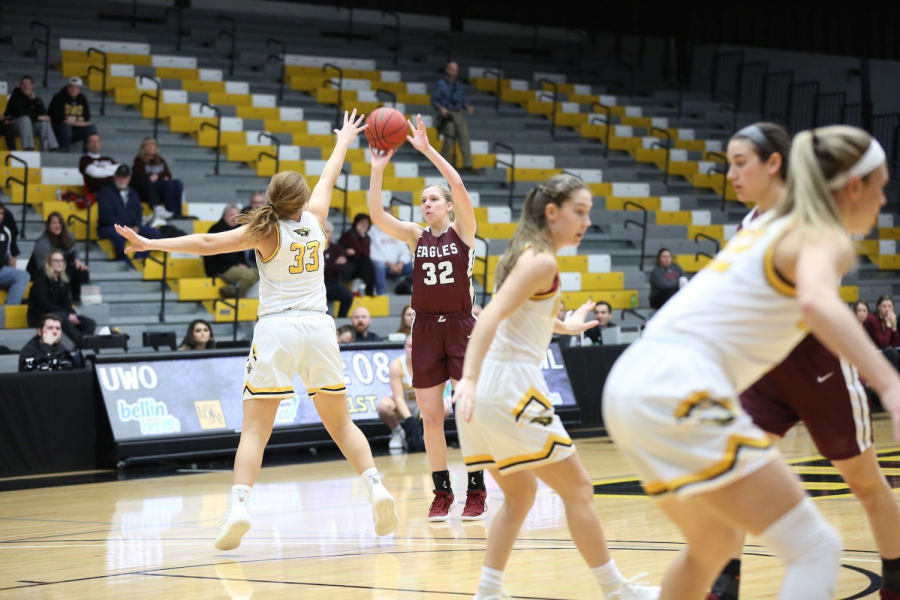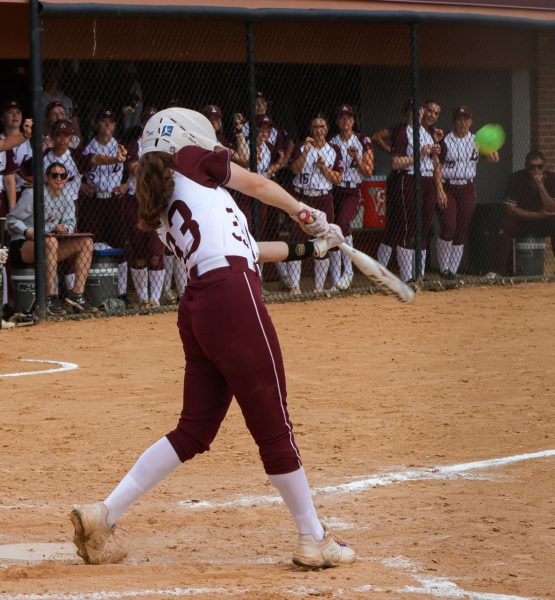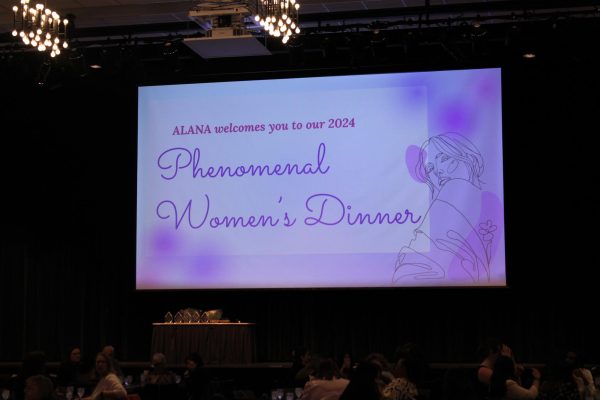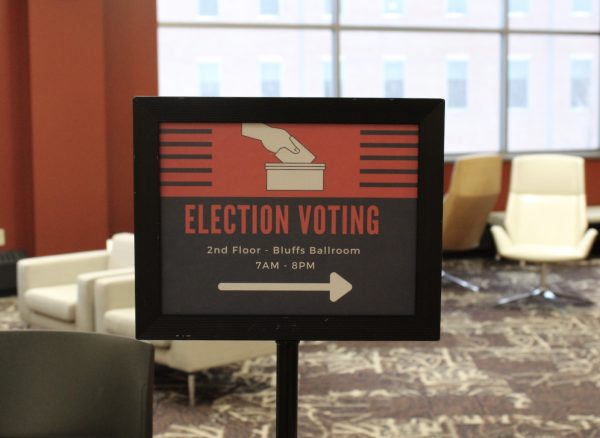UWL students comment on the gender disparity in sports
April 20, 2019
At University of Wisconsin-La Crosse some student-athletes on campus feel like there is a gender disparity in sports. Nicole Trussoni, UWL freshman, softball player, and Aquinas high school alum explained that her former high school’s women’s basketball team was overlooked by the men’s team even though the women’s team had a lot more success than the men’s team. “They won state twice and the only time they really got a lot of attention was when they went to state, not really through their whole season,” said Trussoni.
On UWL’s campus, student-athletes explained their feelings on the disparagement of women’s sports. “I know that the baseball team got priority for the gyms over us and even in UWL we would kind of get kicked out early when the baseball team comes,” said Trussoni.
Trussoni also brought up the fact that the UWL baseball team has its own practice field separate from Copeland Field, the field where they compete at, while the UWL softball team only has one field where they practice and play on.
Quinn Shannon, UWL freshman and women’s soccer player hasn’t necessarily seen her team get overshadowed by a men’s sport since there isn’t a men’s soccer team. However, she is confident that the reason men’s sports are dominating is because of the nature of sports. “I know that a lot of people say it’s more exciting to watch men’s sports because it’s a higher pace and more physical…I know for basketball it’s ‘I want to go watch men’s basketball because I can see people dunk,’” said Shannon.
Nathan Clark, UWL junior and football player acknowledged the amount of attention his football team has gotten over other women’s sports here on campus. “I have noticed the differences but it’s just because there are more players on the men’s teams and more people involved in general such as alumni, sponsors, parents, and relatives…football is more of a popular sport than most in this country,” said Clark.
To understand the differences in male and female sports we must look at the history of sports themselves.
Centuries ago women were not even allowed to participate in sports or even watch them for that matter. According to a study from Sport Journal, “After finally being permitted to participate in sports, women had to undergo gender testing to make sure they were not men trying to cheat the system.”
According to the same study, women’s sports ratings on television didn’t surpass the coverage of dogs and horses until 1992. Up until the 2012 Olympic games held in London, there were always more men’s Olympic sports than women.
Both Shannon and Trussoni agree that the sexism of the sports teams is systematic but Clark argues that more than anything, it has to do with what sports one was raised watching. “If your parents watched football, NBA, and baseball growing up then you’re a lot more likely to do the same thing. But if you’re parents are interested in the WNBA and volleyball then you most likely will be too,” said Clark.
Clark also commented that the main issue for him is that he finds men’s sports more fun to watch. “I just think there’s more of a public interest in men’s sports because it’s more competitive thus more entertaining. In no way am I saying that women’s’ sports are not entertaining, but in some sports, men are physically capable of things women aren’t which makes it more competitive. In other cases, such as gymnastics, women are better, so they’ll probably get more attention than men,” said Clark.
With more attention geared towards the NBA, and less towards the WNBA, this means there is a big pay difference between the two sports. According to Forbes, the average NBA salary in the 2016-2017 season was $6.2 million. The average WNBA salary is $71,635.
According to Sporting News, Breanna Stewart a WNBA player recently ruptured her Achilles while participating in an overseas league in Europe. The article said, “Because most WNBA players are paid far less than their male counterparts, Stewart and many other WNBA players join teams overseas for extra money. Her injury, one month before the WNBA season is set to begin, once again has brought up the pay discrepancies between NBA and WNBA players.”
In response to Stewart’s injury Katie Barnes, a sports a culture writer for ESPN tweeted “Injuries happen in sports, but Breanna Stewart’s happening one month before the WNBA season starts because she’s playing overseas for a team that definitely pays her more is a bitter pill to swallow. She — along with a handful of young stars — are the future of the W. Pay them.”
For Shannon, equality in men’s and women’s sports starts with simply the appreciation for women’s sports. “I think a lot of people who do watch women’s sports appreciate the game itself more than the activity of going to a basketball game,” said Shannon.
Shannon noticed that societal impact plays a role as well, saying, “A lot of people kind of shut down the idea of going to a women’s basketball game compared to a men’s basketball game. It’s just the whole idea that it’ll be boring.”
Shannon added, “I think people just being open to the idea of watching a women’s sport and supporting it is important. It’s kind of hard to force that on people when it’s self-motivated, but I think that would really be where it would start for people.”
Shannon and Clark said that they, as well as most student-athletes of campus, show support for all the sports teams at UWL.
Shannon said, “I went to a gymnastics meet and I saw a whole bunch of my football player friends and I know the wrestling team is really supportive of the gymnastics team too.”
Clark added, “I know people on my team frequently go to volleyball and basketball games for both girls and boys.”
Show Global Grounds cashier this article for a FREE bagel with the purchase of a regular-priced drink! Limit one coupon per customer.

















